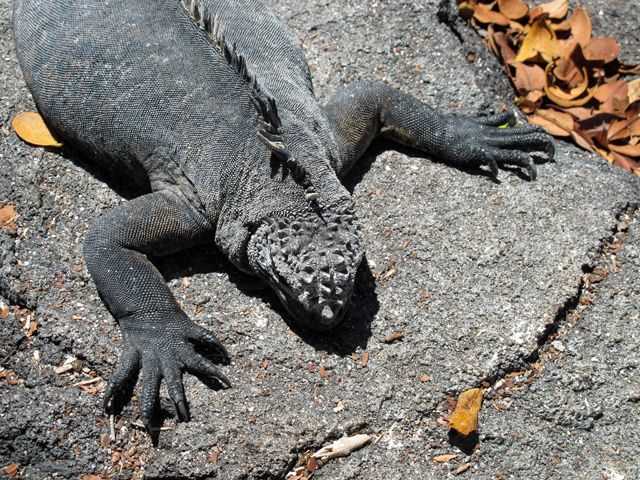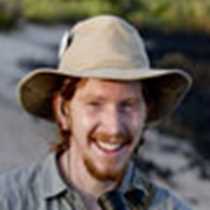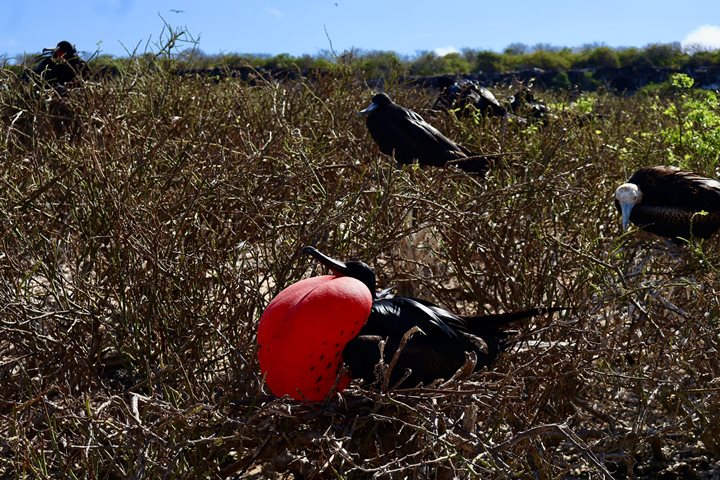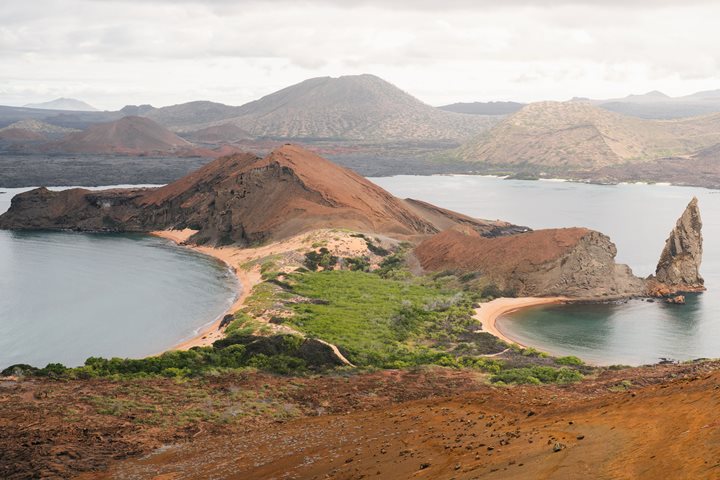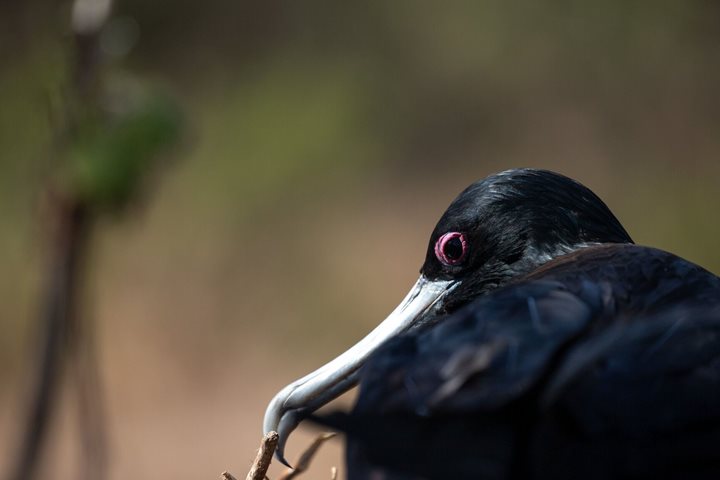Monday 4th September, bright and warm, was a day like no other. We had navigated all night to reach Fernandina and Isabela, the most remote islands of the Galápagos Archipelago. We landed at Fernandina’s northeastern tip, Punta Espinosa, for our morning expedition. Thanks to its highly productive waters, this small peninsula has a large marine iguana population. There were beautiful textures of pahoehoe lavas everywhere, evidence of the volcanism that created this archipelago. Galápagos sea lion pups played in the nearby tidal pools; and a small colony of endemic flightless cormorants fascinated us. Back on board, we spotted a pod of killer whales or orcas; and later in the morning, we snorkeled off Punta Espinosa, amid a number of Pacific green sea turtles. Everything was calm and normal during lunch, until—a volcanic eruption at “La Cumbre,” the summit of Fernandina—the first eruption there since 2009. And there we were, at the right time and place! A tall plume of vapor and ash rose high, a magnificent view against a blue and cloudless sky. In the afternoon, we explored Punta Vicente Roca, located in the outside rim of the Ecuador volcano on northern Isabela. This stunning coastline is the home to flightless cormorant, Despite the surrounding beauty— brown noddies, blue footed and Nazca boobies, and soulful Galápagos fur seal—our eyes were glued on the distant activity at the Fernandina volcano. At sunset, everyone gathered on the deck for a wine tasting, and the most amazing show nature offers—an erupting volcano. As the night deepened, the spectacle became more dramatic, with red-hot lava flowing down the slopes of Fernandina. Unbelievable! We were truly privileged to be in a perfect place at a perfect moment: Galápagos at its surprising best!
6/13/2025
Read
National Geographic Endeavour II
Genovesa Island
We started the day with excitement as we landed on the beautiful, pristine coast of Isla Genovesa - a true birder’s dream. Along the sandy beaches and steep cliffs of Darwin Bay, we were surrounded by an incredible array of birdlife. Frigatebirds soared closely overhead with their red pouches on full display, while Nazca and blue-footed boobies nested along the rocky ledges. Swallow-tailed gulls called out as we walked past. In the distance, we saw the stoic and elusive short-eared owl. The island was alive with color, sound, and constant movement. Between our excursions to Isla Genovesa, we snorkeled near Prince Philip’s Steps and discovered a vibrant world beneath the waves. Schools of fish swirled around us, a fur seal turned in the water as if dancing on cue, and sea lions relaxed nearby. As our last snorkeling adventure came to a close, we spotted a sea turtle resting calmly in a crevice. As the sun retreated into the sky on our last return to National Geographic Endeavor II, we reflected on the sheer magnitude of what we witnessed on our last full day. Isla Genovesa, like the other islands, gave us a connection to a sacred world. The harmony between land, sea, and sky reminded us how deeply interconnected, vital, and fragile these ecosystems are. Watching birds tend to their nests and marine life swim effortlessly, we were struck by how little space there is between wonder and reverence. We recognized that our journey wasn’t just about observing unique wildlife, it was about feeling part of something grander and beautifully ancient.

